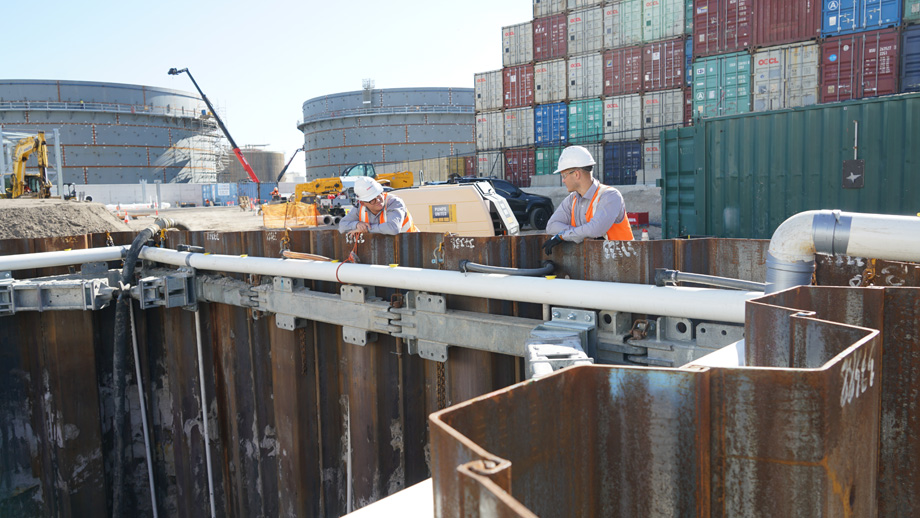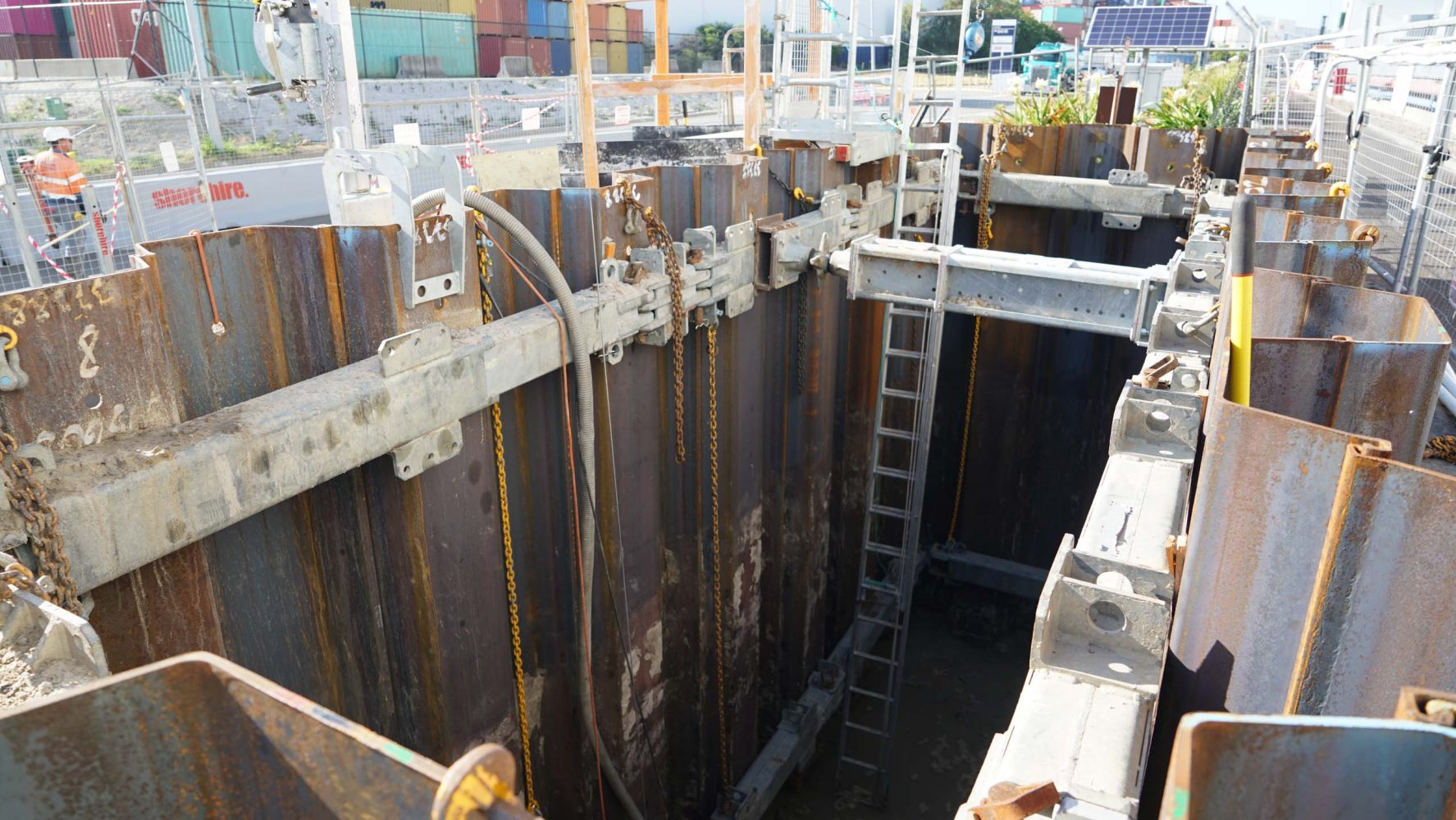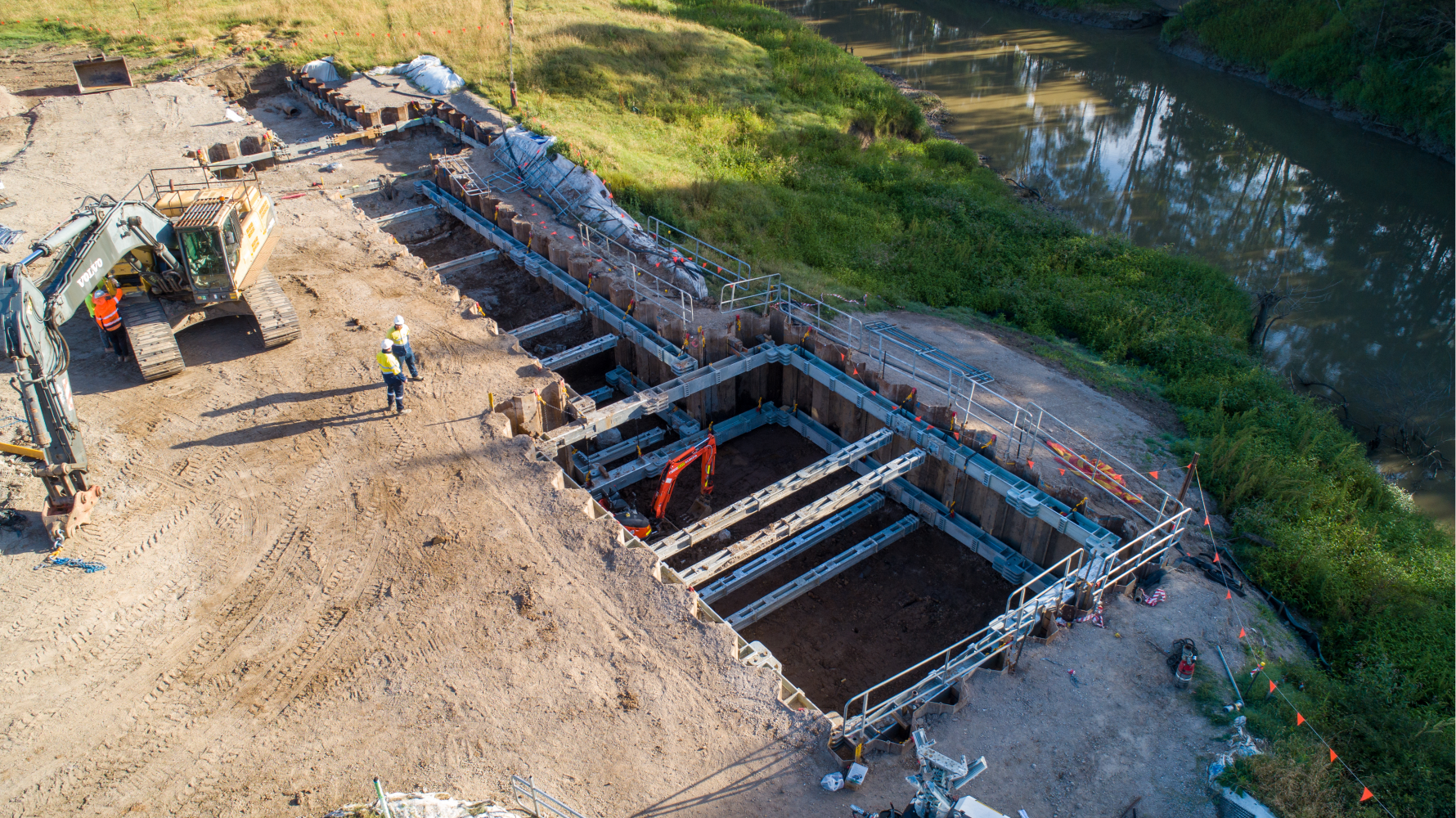Home Blog Product Info What Is a Cofferdam?

Cofferdams are a type of shoring system built in or across water that is designed to keep water out of an excavation, allowing construction work to happen.
When construction work needs to happen below the water level of a body of water, a cofferdam can be used to allow the work to be done in a water-free environment.
Cofferdams have been used throughout history, with the first reportedly being used in 539 BCE. King Cyrus of Persia used one to divert water from the Euphrates River, which allowed the capture of Babylon.
One of the most common types of cofferdams is a Sheet Pile Cofferdam, which is made from steel Sheet Piles driven into the ground as a cantilever solution in shallower projects with more stable soils. Where excavations are deeper, or there is unstable soil, a bracing frame, such as our Shore Brace 200 or 400 Hydraulic Bracing Systems, can be used to provide additional support and stability. This is called a Braced Cofferdam.
Once the Sheet Piles are installed, the water inside the system can be dewatered (removed) using pumps to create a safe and dry working environment.
One of the reasons that Sheet Pile Cofferdams are so popular is their strength at holding back large amounts of water and soil and their ability to withstand extreme weather conditions.
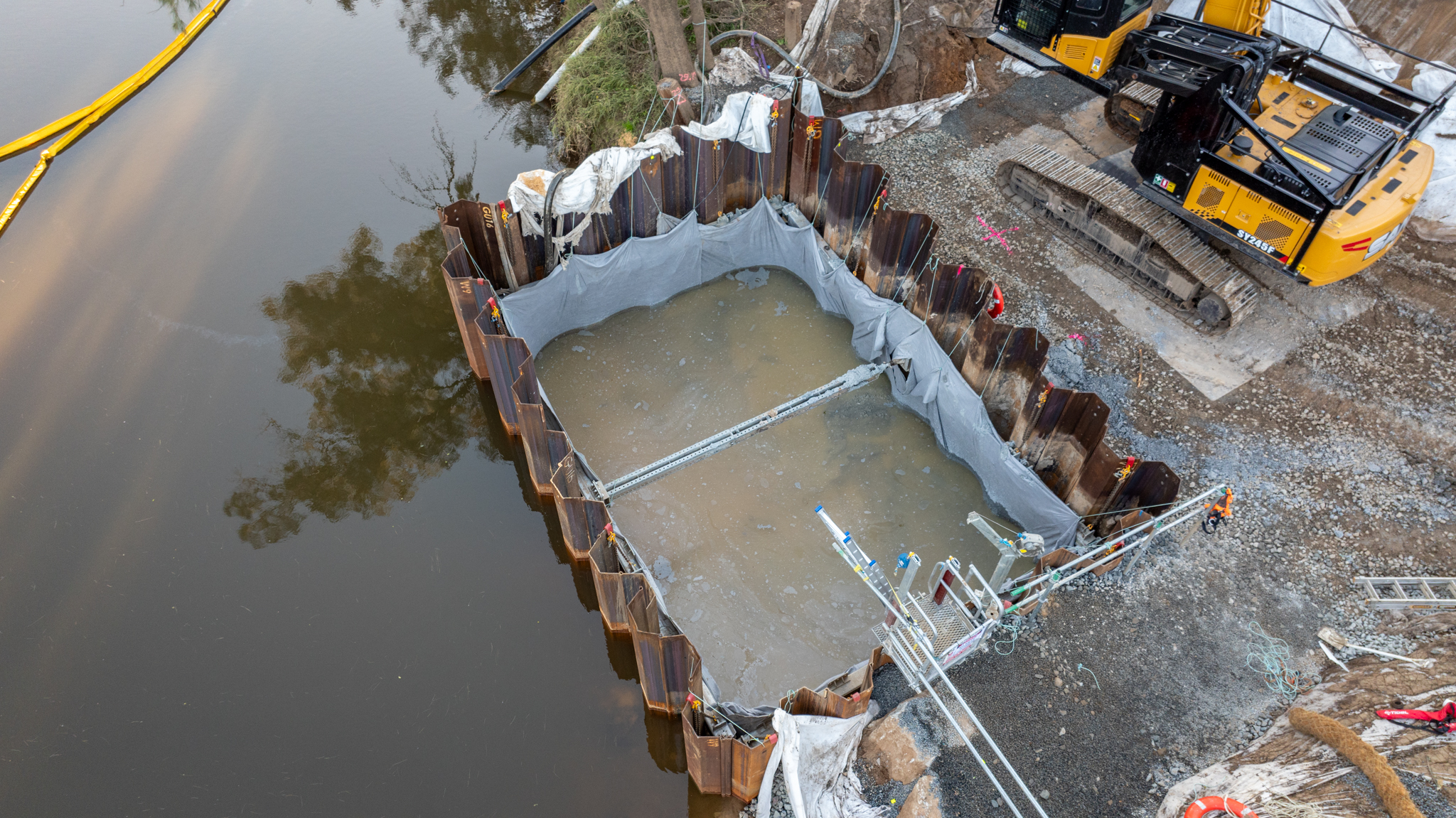
What Are the Other Common Types of Cofferdams?
There are a number of different types of cofferdams, including:
- Earth-filled Cofferdams: This is the simplest type of cofferdam and is usually built from the materials available near the excavation, such as soil, clay, or sand. These types of cofferdams are preferred when the height of the water is less than 3 metres, and the velocity of the water is low.
- Rock-filled Cofferdams: These types of cofferdams are very similar to earth-filled ones, except they are constructed with rocks instead of earth or dirt. They are ideal for use in water heights of up to 3 metres, and the slope of this type of cofferdam can be made as steep as 1:1.5.
- Cellular Cofferdams: This type of cofferdam also uses Sheet Piles to form a barrier, but they are placed in a circular pattern to create “cells”. These cofferdams are ideal for large-scale projects where the water is very deep, and they can be left in place permanently.
- Double-Walled Sheet Pile Cofferdams: This type of cofferdam uses two rows of Sheet Piles with space in between them to connect the Sheet Piles together with a system of tie rods and to fill the space with granular material like sand or rock. These cofferdams are ideal when the water level and velocity of the water is very high.
The type of cofferdam that will need to be used for a project will depend on a number of factors, including the size and depth of the excavation, the type of soil the excavation will be in, the amount of water the cofferdam will be installed in, the flow of the water, and the available materials.
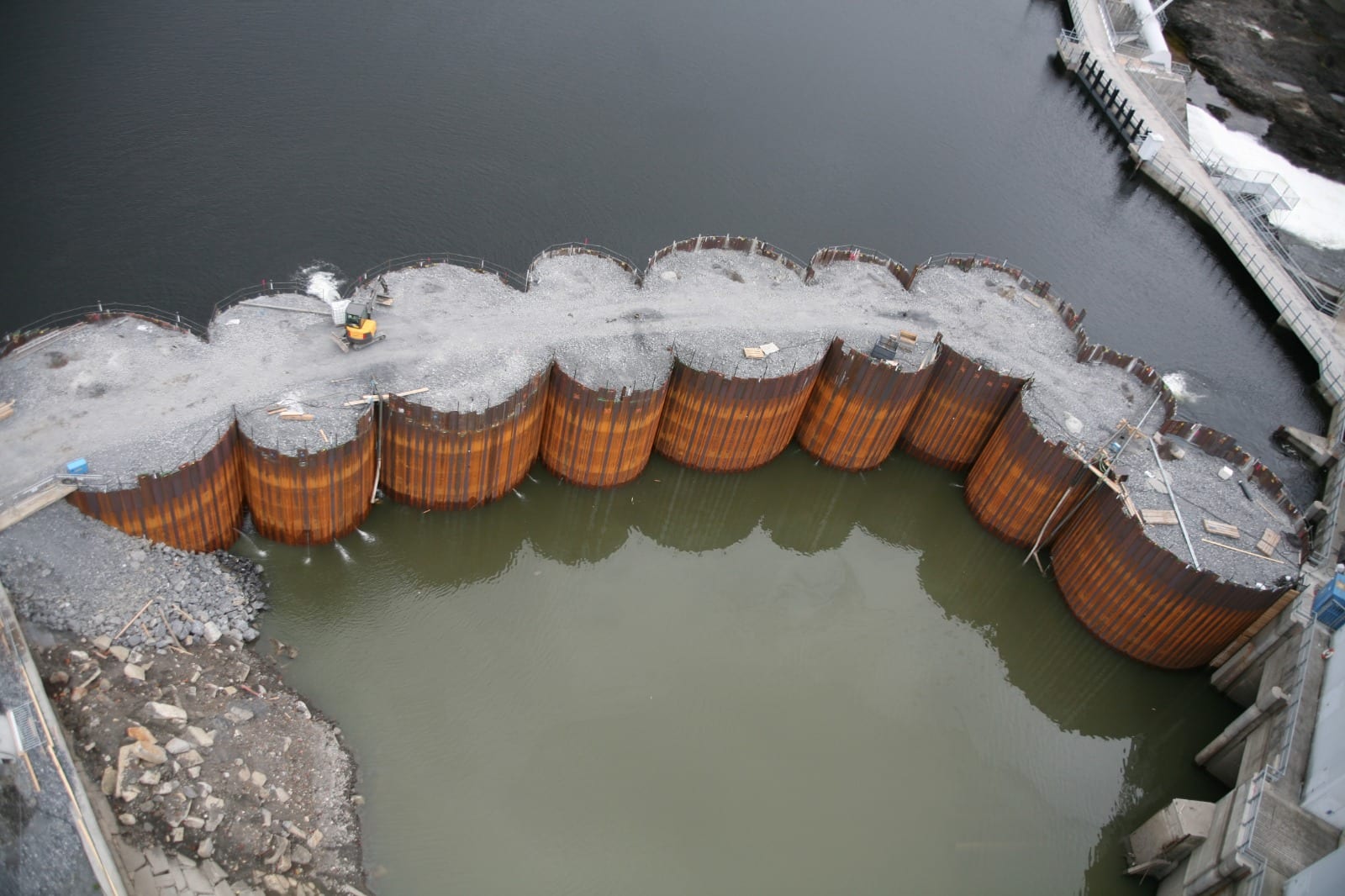
What Are Cofferdams Used For?
Cofferdams can be used in a wide variety of construction applications, including:
- To build the foundations of structures, such as bridges, piers, abutments, docks, dams, etc.
- Pipeline installation and repair
- Environmental remediation
- To build water treatment facilities
- Embankment construction
- The construction of building basements
- Temporary or permanent retaining walls
- Other projects in or near bodies of water
How Are Cofferdams Installed?
The process of installing a cofferdam can vary based on the type of cofferdam and its application, but the general steps for installing a Sheet Pile Cofferdam are:
- Site Inspection – The soil type, depth of the water, and conditions of the site are thoroughly inspected to ensure that the best type of cofferdam for the project is a Sheet Pile Cofferdam.
- Document Review and Engineering – A competent engineer assesses all necessary documents, such as geotechnical and groundwater reports, and uses them to form a detailed and certified temporary works design for the project. Shore Hire can offer this service through our expert engineering team.
- Sheet Pile Installation – Depending on the type of soil the cofferdam will be installed in, the Sheet Piles are driven into the ground, either after pre-augering the soil or directly using a vibratory hammer (an EMV) or the bucket of an excavator. The Sheet Piles must be interlocked and installed deep enough to create a stable, watertight barrier.
- Dewatering – Once the Sheet Piles have been installed, the water within the cofferdam needs to be removed or pumped out. Any soil in the cofferdam also needs to be removed to make room for the construction work to happen.
- Reinforcement – Depending on the project’s requirements, additional internal support might be required, and hydraulic bracing or struts can be installed against the Sheet Piles to reinforce the cofferdam and ensure it is stable and secure.
- Removal and Re-Use – After the construction work is completed, the Sheet Piles and bracing (if used) can be removed and re-used for other projects.
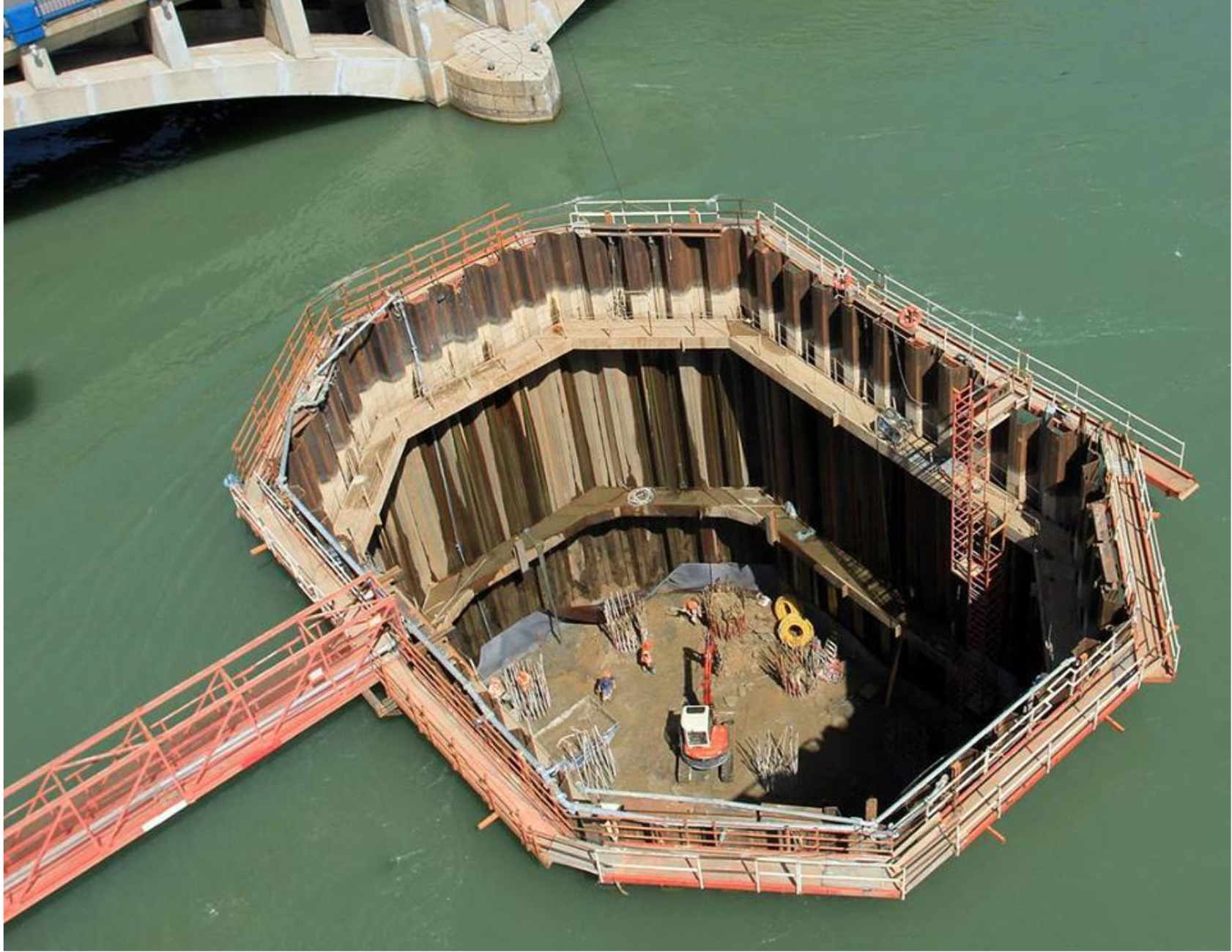
If you would like to learn more about cofferdams, our Sheet Piles and Hydraulic Bracing Systems, or any of our other shoring products, visit your nearest branch, email [email protected], or call our friendly team of experts at 1300 746 734.
